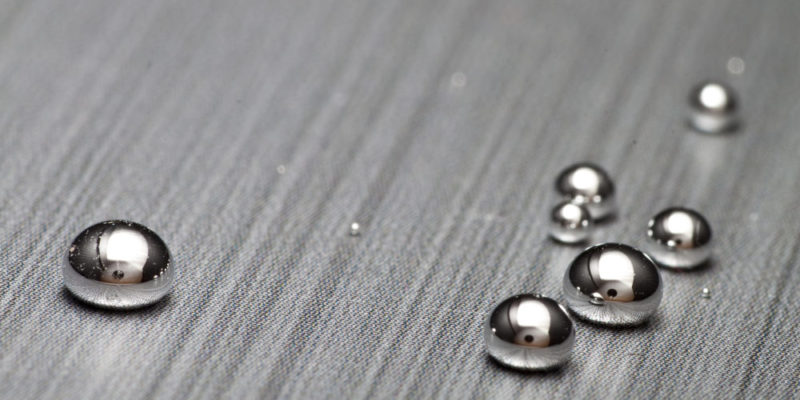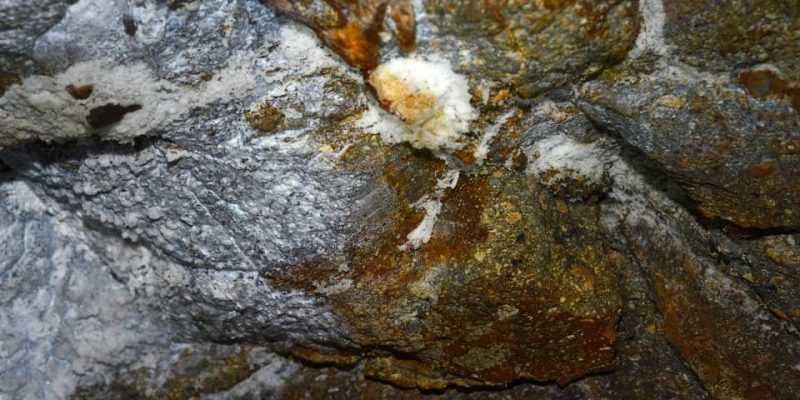We explain what mercury is, when it was discovered and its properties. Also, what are its features, uses and more.
What is mercury?
Mercury is a metallic chemical element , also known as quicksilver, hydrargyrum or liquid silver. Its symbol in the Periodic Table of the elements is Hg and comes from its name in ancient Greek: hydrargyros, a term composed of hydro (“ water ”) and argyros (“ silver ”). This is because it is the only liquid metal at room temperature (it is liquid like water, but with a metallic sheen like silver).
The name "mercury" comes from Roman mythology, as the main qualities of the Roman god Mercury were his mobility and speed. The alchemical symbol for this metal is also the symbol for the planet Mercury.
Mercury in the periodic table
Mercury belongs to group XII (IIB) of the Periodic Table. It is among the transition metals (groups 3 to 12).
This specific group is known as the zinc group and contains the elements zinc (Zn), cadmium (Cd), mercury (Hg), and copernicium (Cn).
When was mercury discovered?

Mercury has been known since ancient times of mankind : it can be found in ancient Egyptian tombs dating back to 1500 BC. C. and in 1800-year-old Teotihuacan tombs.
Its properties fascinated the human being , who in those times saw in it a primordial element, the pure and original metal from which the other known ones would have been born . That is why it was considered a powerful remedy for various ills, capable of prolonging life eternally.
The ancient Greeks used it in ointments , the Egyptians as a cosmetic, and around the 5th century it was discovered that amalgams could be made, that is, mixtures of mercury and other metals.
Chemical properties of mercury
Mercury has a low chemical reactivity , which means that it reacts very little with most acids , except those that are highly oxidizing, such as concentrated sulfuric acid , aqua regia (a mixture of concentrated nitric acid and hydrochloric acid), and nitric acid, which dissolve it leaving sulfates, nitrates and chlorides.
Some other reactions of mercury resemble those of silver . For example, atmospheric hydrogen sulfide, solid sulfur flakes , activated carbon, or powdered zinc are used to contain mercury spills.
In contact with other metals, mercury tends to form amalgams , that is, mixtures. Mercury perfectly dissolves gold , manganese, copper and zinc. However, it does not dissolve iron , nor do most of the transition metals in the Periodic Table.
Its reaction with aluminum is particularly corrosive , since mercury destroys the oxide layer that protects this metal.
Physical Properties of Mercury

Mercury is the only naturally liquid metallic chemical element , despite being a white, heavy metal. Unlike other metals, it is a poor conductor of heat; Not so with electricity .
Its solidification and boiling points are particularly low for a metal (-38.83 °C and 356.73 °C respectively). This is due to its particular electronic configuration, which makes it similar in behavior to noble gases .
In its natural state, mercury forms perfect spheres that slide easily over surfaces and that, when physically cut, generate new spheres. Like all liquids , it does not have a defined shape but rather adapts to the container in which it is contained, although it does have its own volume.
In the face of heat, mercury behaves like a metal, dilating. Thanks to this property, for a long time it was used in thermometers.
Abundance of mercury

Mercury is present in deposits throughout the world , mostly as cinnabar (mercury sulfide (HgS)). However, it is relatively rare on the earth's surface (0.08 parts per million).
It usually appears in the form of salts and oxides , but since it does not mix geochemically with the elements that abound on the planet, its deposits are highly concentrated. Most of its deposits are found in areas of recent orogenesis, with high-density rocks forced to emerge from the earth's crust due to volcanic activity.
Mercury isotopes
Mercury has seven isotopes . Of these, 202 Hg is the most abundant . Some are radioactive and have a relatively long decay period (between 46 days and 444 years), as is the case with 194 Hg and 203 Hg. The rest of the radioactive isotopes have decay periods of just one day.
What is mercury used for?

Mercury has a large number of applications for humans, such as:
- In mining . Given its reactivity to gold and other precious metals, it is an element widely used in their (especially illegal) extraction, which often leads to the poisoning of rivers and groundwater.
- In the manufacturing industry . Mercury is used to make thermometers, barometers, and other instruments that take advantage of its dilation in the face of heat. They are also used to make mercury vapor lamps, liquid switches, and electrodes.
- In the chemical industry . Mercury is used in the manufacture of pesticides, as a catalyst for batteries, as a detonator for explosives (mercury fulminate), or as a pigment in paints and sealing waxes. Also to produce chlorine and caustic soda.
- In medicine . Formerly it was used to make dental (dental) amalgams, a trend that is in disuse due to the toxicity of the metal. It is also used in antiseptics, laxatives, ointments and other medications that, on the other hand, are increasingly being banned.
Toxicity
Mercury is a highly toxic metal, whose intake in the body causes damage to the nervous system and the liver system . It can also cause various allergic reactions, skin irritation, chronic fatigue and headache.
Its presence in the body even causes damage to DNA and chromosomes . It can cause decreased fertility or offspring with birth defects.
Brain damage can lead to loss of senses (blindness, deafness), personality degradation or learning difficulties, and even permanent memory loss . Exposure to mercury vapors in industrial processes can cause poisoning and should be avoided at all costs.
Environmental contamination by mercury

Its environmental effects are usually disastrous, since it tends to accumulate in soil and water. This pollution also comes from mercury that is released into the atmosphere during fuel burning and other industrial processes.
Once in the ecosystem , this element significantly alters the pH values of water and soil . On the other hand, it also accumulates within living beings , for example in fish that are particularly sensitive to methylmercury, and their organisms are severely affected.
In turn, due to its accumulation in animals , mercury can also poison humans due to fishing or eating contaminated food.
Global mercury production
The exploitation of mercury in the world witnessed its main boom when it became an essential element for mining in the Americas , in colonial times . A second boom took place later, when the chemical industry began the process of obtaining chlorine.
However, after 1980 its environmental effects became more noticeable and studied. As a consequence, its exploitation began a gradual decline, as it also tended to be replaced by less toxic materials.
The world's leading producers of mercury are China , Kyrgyzstan, Argentina, Mexico, Peru , Tajikistan, and Norway .
The above content published at Collaborative Research Group is for informational and educational purposes only and has been developed by referring reliable sources and recommendations from technology experts. We do not have any contact with official entities nor do we intend to replace the information that they emit.
Veronica is a culture reporter at Collaborative Research Group, where she writes about food, fitness, weird stuff on the internet, and, well, just about anything else. She has also covered technology news and has a penchant for smartphone stories. .
Leave a reply
Your email address will not be published. Required fields are marked *Recent post

Sport: What Is It, Types, Risks, Features, Characteristics and Examples

Dogs: Emergence, Features, Characteristics, Feeding and Breeds

Story: Definition, Elements, Structure, Features and Characteristics

